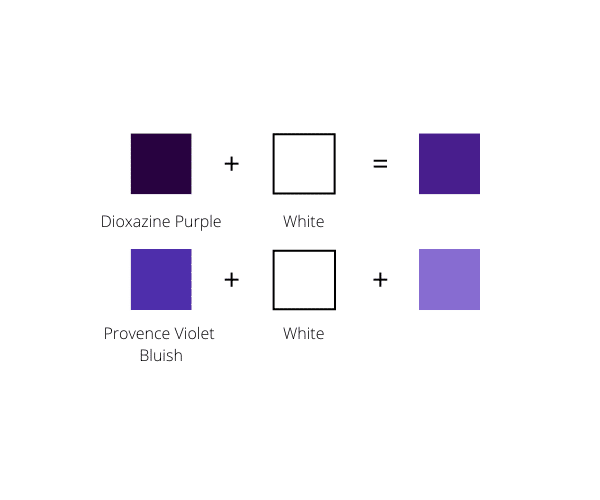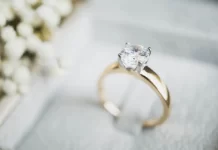Table of Contents
What Are Color Categories?
How To Make Purple? The colors are categorized into three classes:
1. Primary Colors To Make Purple
The colors are building blocks, and all colors are derived from primary colors. These are red, yellow, and blue (RYB). Primary colors are also our traditional colors.
2. Secondary colors To Make Purple
These are the colors derived from primary colors and include purple, green, and orange colors. Secondary colors are created by mixing two equal quantities of color. Red and yellow give us orange color, blue and red give us the purple color and yellow and blue give us green color. These three colors are secondary, but few are present in the secondary category of colors and are called additive secondary colors. Blue and green make cyan, blue and red make magenta, and blue and yellow make green.
3. Tertiary Colors To Make Purple
The colors are derived from primary and secondary colors. If we mix primary and secondary colors, we get tertiary colors—red-orange, red-violet, yellow-orange, yellow blue, yellow-green, yellow blue, and blue-violet.
How To Make Purple Color?
Many people thought that it is effortless to make eggplant colors, but it is not. Purple color can be made by mixing blue and red color, but sometimes people fail to make it because we should take red and blue colors which don’t have yellow and green pigments. After all, these pigments can turn your purple color into dark brown or gray. Once you learn the mixing of colors, you can make different shades of different colors. Violet has many shades. Once you make a simple purple shade, you can adjust it according to your need by adding more red, blue-white, or black color. You should take good quality colors so that you get a clean, bright, smooth, soft, and tint-free purple color.
Select and Test your color
Please read the label of red and blue colors that they are yellow and green pigment-free. If yellow or green is mentioned in the list, then don’t use these red and blue colors because they can ruin your lavender. The yellow color in lavender can turn into dark brown. So please select yellow and green pigment-free colors and must read the label while buying colors.
Test the blue and red colors before getting violet. You take very little red and mix it into white color. The actual red color turns into pink and tests the blue color by adding white color, and the actual blue color turns into sky-blue. Clean the brush or color spatula with a paper towel after use to avoid color contamination. For color, testing uses few droplets of color because few drops of colors are enough to check the results.
Mix The Colors
Mix Permanent rose and Ultramarine Blue colors in equal quantities to get a plum color. These colors very well, so you get a perfect plum color. The permanent rose color doesn’t have yellow, and ultramarine blue doesn’t have green pigments. So your indigo plum is ready, and I hope you are in love with this perfect plum.
Note: you can also use Primary Magenta and Quinacridone Magenta instead of permanent rose. These two colors also work well instead of the permanent rose color.
I am mixing Different Shades of violet.
We know that violet is formed from red and blue, but we can get different shades of violet by adding more red, blue, white, and even black color in violet. But add carefully more color to your violet. Just add a few drops of other colors while creating a new color because you can not get your original color back. For example, if you add white color in this color, add one or two drops of white, mix the color, and add more if needed. Please don’t add the same quantity of white color as violet because it can ruin your original color.
Add More Red Than blue.
Put in more red than blue if you want to make a Rich, more profound, and darker blackberry color. Add a few drops of blue color, mix it, and add more if needed because it is easy to add more colors but impossible to take them out.
You can also add a few drops of Black to get a deeper, darker blackberry but don’t add too much.
Add More Blue Than Red
If you want a warm blackberry color, then add more blue color than red. Mix carefully to avoid patches of red and blue patches. Adding a few drops of white can soften your color.
Mix cerulean blue And permanent Rose
Always use an actual red color that doesn’t have yellow bias, but cerulean blue has few yellow biases that give a purple-gray shade. Mix permanent red and cerulean blue color very well and get a smooth and matte grayish majestic color.

Mix Cyan And Magenta
If your painting wants some shocking and bright lilac look, I’m here to tell you about bright, clean, shocking, and attractive lilac. Just mix the cyan and magenta very well and get an electric lavender color. The magenta has a pinkish purple look, so add magenta as you need and get shocking pinkish lilac.
Mix White in purpura
If you are looking for a lighter shade of purpura, don’t worry; you can make it easier. Just take violet color and mix a few drops of white color. It will give you a lighter purpurea. As you add white, the periwinkle becomes light.
Mix Black in blue-violet
Here you can have different shades of lavender, violet, indigo by adding black to Rebecca. You can make Tyrian purple, old heliotrope, Spanish purple, and many other colors.
Take the purple color and add a few drops of black color. It will give you a deeper, darker shade. While making a new shade, add a few drops of black color and mix and add more if needed. Keep adding black color until you don’t get your desired plum.
Note: don’t be afraid of playing with other colors. If yellow can turn purple into brown, many other colors can change a simple color into your desired color. You can learn many new colors from this. Keep playing. It can not hurt you and enjoy new shades.
Also read: How to Start a Blog









